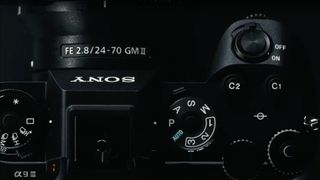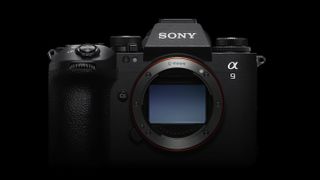The Sony A9 III is the fastest ever mirrorless camera with a new kind of sensor
Sony has unveiled the first full-frame camera ever to use a global shutter: the Sony A9 III. This means it offers professional photographers the fastest continuous burst shooting speed ever at full quality: a fast 120 fps for 24.6 MP raw and JPEG photos.
There’s no blackout during burst shooting, and thanks to that global shutter – which means all the sensor’s pixels are read at the same time – there’s no ‘rolling shutter’ distortion you can sometimes get with regular sensors.
This means that fast subjects and camera movements, such as panning with moving bicycles, are entirely possible without having to worry about distortion in your photos. And this record-breaking mode for a full-frame camera also has surprisingly few compromises.
Those burst sequences are only possible for a length of 1.6 seconds, but do include 759-point continuous autofocus – using Sony’s AI autofocus chip for the best subject detection and tracking performance ever – and autoexposure.
Sony A9 III price and availability
The A9 III list price is $5,999 / £6,100 and will be available from late January 2024. Australian price and availability TBA.
That’s not the end of the Sony A9 III’s impressive specifications either. The successor to the Sony A9 II can shoot at 1/80,000s (another record) to freeze the action, but this is limited to 1/16,000s if you’re shooting continuously.
The camera also features flash sync speeds at any shutter speed and is powered by the Bionz ZR processing engine, which is apparently eight times more powerful than the A9 II’s processor.
The A9 III’s built-in image stabilization system also offers up to eight stops of compensation, giving sports and wildlife photographers plenty of leeway when shooting handheld.
While it’s primarily a no-compromise mirrorless camera for sports photographers – many of whom hope to take it to the 2024 Olympics in Paris – the A9 III also has some impressive video specs.
It can record 4K/60p (oversampled from 6K) and also 4K/120p slow motion without any cropping. With 10-bit 4:2:2 All-I recording, 16-bit raw output and support for both S-Cinetone and S-Log3 on board, the A9 III will be a fine tool for hybrid photographers who need to capture a mix of photos and video.
Alongside the A9 III, Sony unveiled the world’s lightest f/2.8 prime telephoto lens for sports and wildlife photographers, and the pair look like a match made in heaven.
Sony is (again) pushing the boundaries of the camera
While Canon and Nikon have tried hard to match Sony’s level of camera innovation over the past decade, the A9 III shows that Sony is still the great pusher of boundaries – and it’s one of the reasons we like the tech giant as our brand. the year in the Ny Breaking Choice Awards 2023.
We’ve already seen some very fast sports cameras, such as the Sony A9 II and, more recently, the Nikon Z9. The Z9 was the first professional camera to completely forego a mechanical shutter and use a stacked 45.7 MP sensor to deliver a fully digital shooting experience.
But on paper, the Sony A9 III has taken another leap forward by becoming the first full-frame with a global shutter. While traditional stacked sensors like those in the Nikon Z9 are fast, they can still occasionally be prone to issues like rolling shutters or limited flash sync speeds.
Because Global Shutters read all of the sensor’s pixels simultaneously, the disadvantages of traditional electronic shutters are no longer an issue. And that means the A9 III can shoot at 120fps (albeit in bursts of just 1.6 seconds) and offer flash syncs at any shutter speed.
It remains to be seen if there are any downsides to the Sony A9 III’s use of a global shutter, but we’ll get to work on it now and will give you our first impressions soon.


